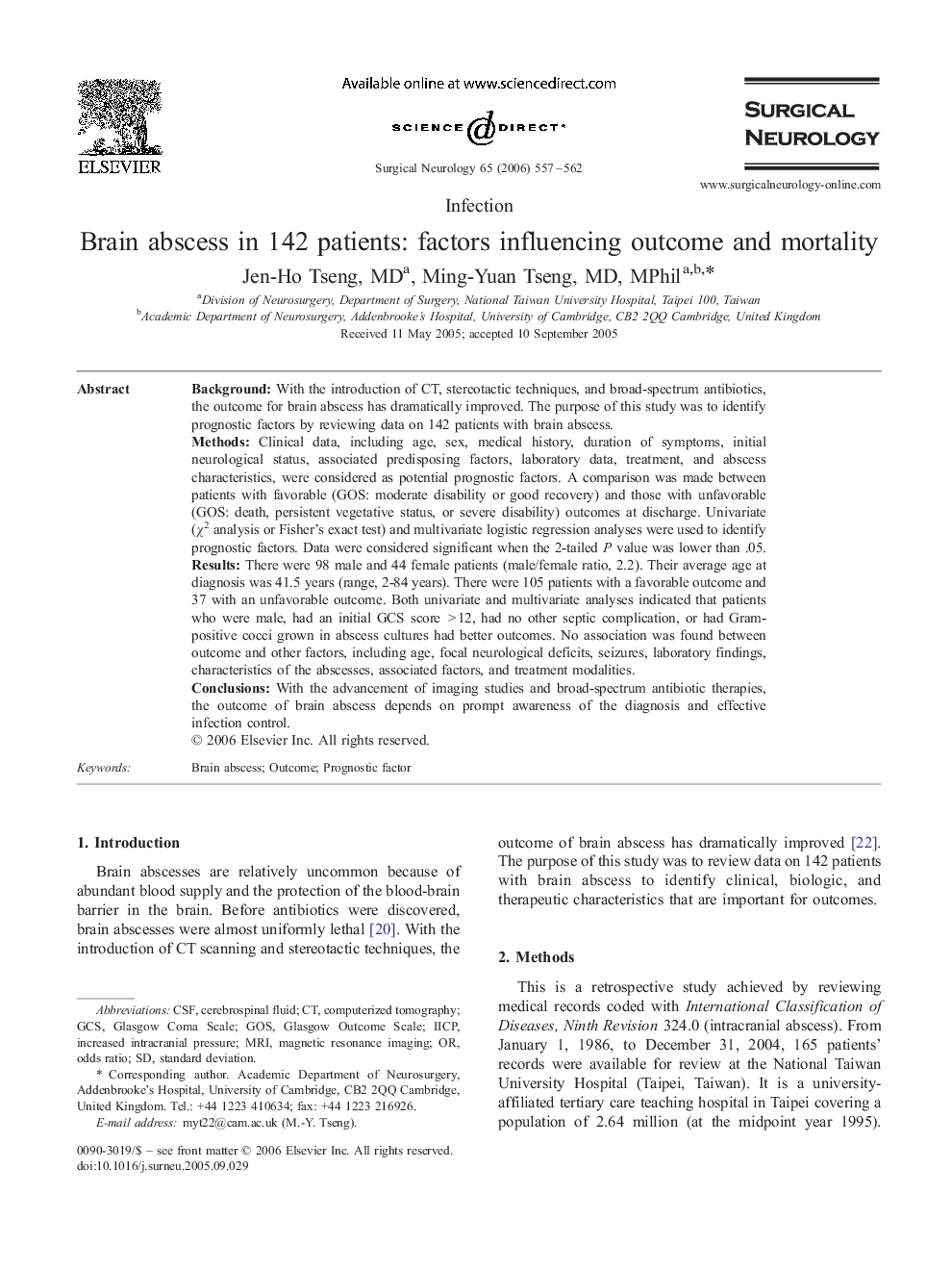| Article ID | Journal | Published Year | Pages | File Type |
|---|---|---|---|---|
| 3094137 | Surgical Neurology | 2006 | 6 Pages |
BackgroundWith the introduction of CT, stereotactic techniques, and broad-spectrum antibiotics, the outcome for brain abscess has dramatically improved. The purpose of this study was to identify prognostic factors by reviewing data on 142 patients with brain abscess.MethodsClinical data, including age, sex, medical history, duration of symptoms, initial neurological status, associated predisposing factors, laboratory data, treatment, and abscess characteristics, were considered as potential prognostic factors. A comparison was made between patients with favorable (GOS: moderate disability or good recovery) and those with unfavorable (GOS: death, persistent vegetative status, or severe disability) outcomes at discharge. Univariate (χ2 analysis or Fisher's exact test) and multivariate logistic regression analyses were used to identify prognostic factors. Data were considered significant when the 2-tailed P value was lower than .05.ResultsThere were 98 male and 44 female patients (male/female ratio, 2.2). Their average age at diagnosis was 41.5 years (range, 2-84 years). There were 105 patients with a favorable outcome and 37 with an unfavorable outcome. Both univariate and multivariate analyses indicated that patients who were male, had an initial GCS score >12, had no other septic complication, or had Gram-positive cocci grown in abscess cultures had better outcomes. No association was found between outcome and other factors, including age, focal neurological deficits, seizures, laboratory findings, characteristics of the abscesses, associated factors, and treatment modalities.ConclusionsWith the advancement of imaging studies and broad-spectrum antibiotic therapies, the outcome of brain abscess depends on prompt awareness of the diagnosis and effective infection control.
